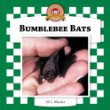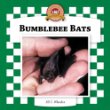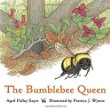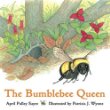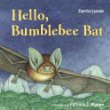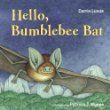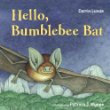Search Results: Returned 16 Results, Displaying Titles 1 - 16
-
-
Call No: 595.7 PERISH Availability:1 of 1 At Location(s) Series Title: Blastoff! readers.Summary Note: "Developed by literacy experts for students in kindergarten through grade three, this book introduces bumblebees to young readers through leveled text and related photos"--Provided by publisher.
-
-
2007., Primary, Bellwether Call No: INSECTS 595.79 GRE Availability:0 of 1 At Location(s) Series Title: World of insectsSummary Note: Simple text and photos introduce beginning readers to bumblebees.
-
-
2007., Primary, Bellwether Media Call No: 595.79 9 Availability:1 of 1 At Location(s) Series Title: World of insectsSummary Note: "Simple text accompanied by full-color photographs give an up-close look at bumblebees"--Provided by publisher.
-
-
2007., Primary, Bellwether Call No: 595.79 9 Availability:1 of 1 At Location(s) Series Title: World of insectsSummary Note: Simple text and photos introduce beginning readers to bumblebees.
-
-
2021., Pre-adolescent, Scholastic Focus Call No: ENVIORNMENT NF CHU Edition: 1st ed. Availability:1 of 1 At Location(s) Summary Note: "Thanks to humans, bumble bees are world travelers, spreading to countries that never hosted bumble bees before. For centuries these insects pollinated our crops. But are they pushing out native pollinators? Why are some species of bumble bees flourishing whereas others are floundering, to the point of possibly disappearing forever? . . . explores these questions and tells the tale of bumble bees' history with humans . . . highlights the interconnectedness of the two species, and touches on the topics of endangerment and extinction, the impact on human agriculture, bumble bee habitats and ecology, and the current crisis of bee protection"--Provided by publisher.
-
-
2021., General Call No: 595.79 Chu Availability:1 of 1 At Location(s) Summary Note: Dive deep into the world of this everyday insect -- and the science behind its uncertain future. Bumble bees are as familiar to most of us as the flowers these fuzzy insects feed upon. But did you know that the bees in your garden could be escapees from a local greenhouse, or descended from stowaways on a Viking ship? Bumble bees are a vital part of our lives and Earth's ecosystems, so much so that we've commercialized their breeding and shipped them across states, countries, and ecosystems for our benefit. However, all of that human interference has consequences. Bumble bees are pushing out native species and altering ecosystems worldwide. Pesticide use has led to the spread of disease in local colonies. And some species may be disappearing entirely. The Beekeepers is an expertly researched overview of bumble bees -- from hive hierarchies to how their brains work -- and the passionate humans and scientists who are fighting for their survival. With a thoughtful and accessible voice, researcher Dana Church introduces readers to the fascinating world of bumble bees, how and why some are thriving while others are floundering, and how both experts and regular citizens are working to ensure their future. Equal parts endearing, frustrating, and hopeful, this scientific narrative is essential for readers looking to understand and make an impact on our changing world.
-
-
c2006., ABDO Pub. Call No: 599.4 WHE Edition: Anniversary ed. Availability:1 of 1 At Location(s) Series Title: Checkerboard animal librarySummary Note: Describes the bumblebee bat's body, habitat, senses, defenses, diet, and life cycle.
-
-
c2006., Juvenile, Abdo Pub. Call No: 599.4 WHEELER Edition: Anniversary ed. Availability:1 of 1 At Location(s) Series Title: Checkerboard animal librarySummary Note: Describes the bumblebee bat's body, habitat, senses, defenses, diet, and life cycle.
-
-
c2005, Preschool, Charlesbridge Pub Call No: 595.79 9 Availability:1 of 1 At Location(s) Summary Note: Bumblebee queens begin the spring alone, but can create colonies of hundreds throughout the year. Follow one queen as she finds a nest, gathers nectar, lays eggs and tends her colony through spring, summer, and fall.
-
-
c2005., Preschool, Charlesbridge Pub. Call No: 595.79 9 Availability:1 of 1 At Location(s) Summary Note: Bumblebee queens begin the spring alone, but can create colonies of hundreds throughout the year. Follow one queen as she finds a nest, gathers nectar, lays eggs and tends her colony through spring, summer, and fall.
-
-
-- Chicka chicka one, two threeBy Taliefero, Crystal Canova, Diana Johnson, Bruce Bayley Martin, Bill, 1916-2004. Chicka chicka 1,2,3 Wells, Rosemary. Emily's first 100 days of school Schwartz, David M. How much is a million? Schwartz, David M. If you made a million Ehlert, Lois Kellogg, Steven Scholastic Inc Weston Woods Studios New Video Groupc2009., Primary, Weston Woods ; Distributed by New Video Call No: 513.2 11 Availability:1 of 1 At Location(s) Series Title: Scholastic storybook treasuresSummary Note: Read along with four stories featuring counting. Chicka chick 1, 2, 3: When one hundred and one numbers race each other up the apple tree, bumblebees come buzzing. Which number will save the day? Emily's first 100 days of school: School begins and as the days and weeks go by, Emily and her classmates learn new ideas and expand their world. How much is a million?: Marvelosissimo the Mathematical Magician explains the concepts of a million, a billion and a trillion. If you made a million: Marvelosissimo the Mathematical Magician explains various forms of money and how to use it.
-
-
2020., Stone Arch Books Call No: 741.5 Availability:1 of 1 At Location(s) Series Title: DC super hero girls.Summary Note: Catwoman is out alone on the prowl one night when KABOOM - an explosion at S.T.A.R. Labs - rouses the other girls from their slumber. Star students Batgirl and Lois Lane both know the lab incident is fishy, and they meet later to share clues. But nothing could've prepared Batgirl for what they see next--Batgirl's dad on a date! Batgirl is grossed out until her friends convince her Dads get lonely, too. And with the school dance coming up and everyone pairing off--heck, even Principal Waller has a date with a guy named Deadshot--maybe it'll be okay just this once. The girls place a personal ad for Commissioner Gordon while they delve deeper into the mystery surrounding the explosion, but they're about to discover more than who is behind the attack on S.T.A.R. Labs. Could it be that posting an ad looking for dates for the commissioner is like advertising catnip for criminals? DC Super Hero Girls: Date With Disaster! continues to develop the relationships forged in DC Super Hero Girls: Finals Crisis, Hits and Myths, Summer Olympus, Past Times At Super Hero High and Out of The Bottle.
-
-
By World BookCall No: REF WOR Edition: ed. Availability:1 of 1 At Location(s) Summary Note: This book introduces many of the animal species that live in grasslands, prairies, and steppes. Included are Mammals, Birds, Owls Emus, Reptiles, Amphibians, Insects including crickets and bumblebees.
-
-
c2007, Juvenile, Charlesbridge Call No: 599.4 Availability:1 of 1 At Location(s) Summary Note: Colorful illustrations and simple text describe the characteristics, habitat, and habits of the Bumblebee Bat.
-
-
c2007., Charlesbridge Call No: 599.4 Availability:1 of 1 At Location(s) Summary Note: Describes the characteristics, behavior, habitat, diet, and enemies of bumblebee bats.
-
-
c2007., Juvenile, Charlesbridge Call No: 599.4 Availability:2 of 2 At Location(s) Summary Note: Colorful illustrations and simple text describe the characteristics, habitat, and habits of the Bumblebee Bat.








